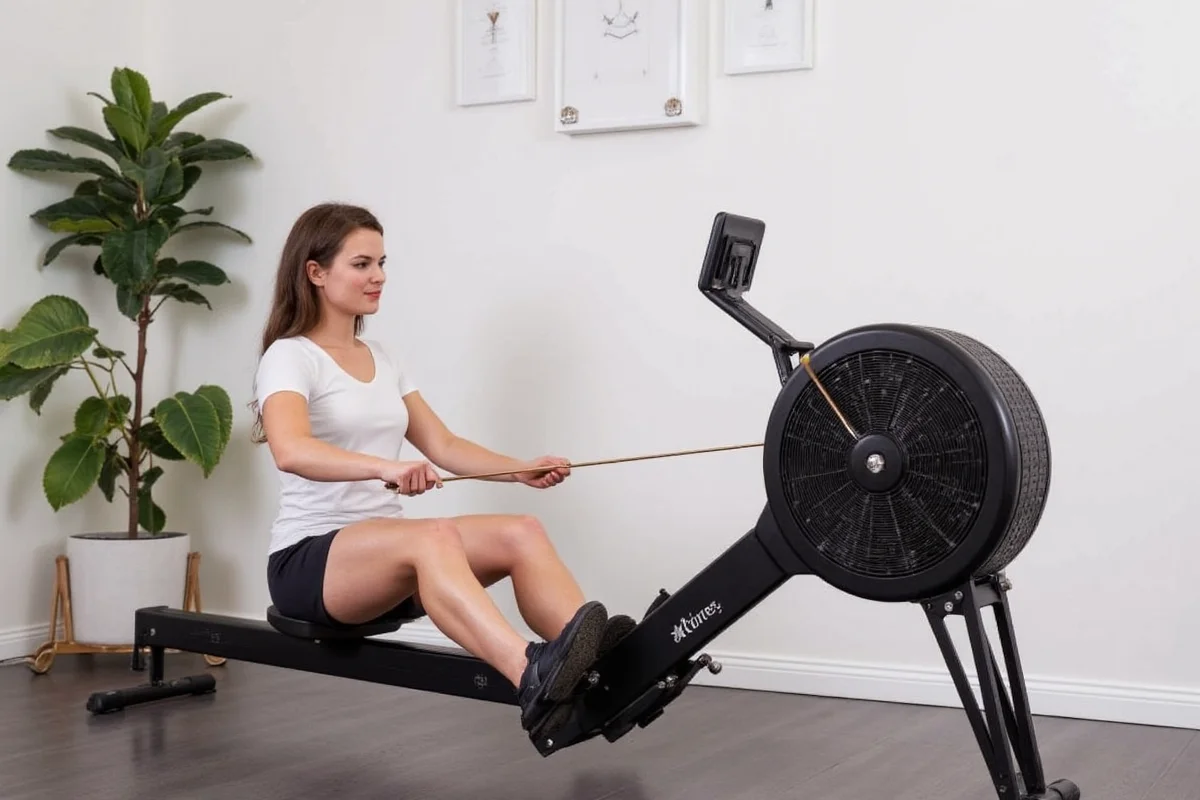Using a rowing machine correctly involves mastering proper form, sequencing movements in four phases—catch, drive, finish, and recovery—and maintaining a consistent rhythm to maximize cardiovascular and muscular benefits while minimizing injury risk.
Why Proper Rowing Technique Matters
Correct rowing technique ensures you engage the right muscle groups, reduce joint strain, and get the most from your workout. Poor form can lead to lower back pain, shoulder injuries, or inefficient training results.
- Maintains spinal alignment and prevents overuse injuries
- Optimizes power output by engaging large muscle groups first
- Improves endurance and workout efficiency
- Supports long-term consistency in fitness routines
The Four Phases of the Rowing Stroke
A full rowing stroke consists of four coordinated phases. Understanding each phase helps build muscle memory for fluid motion.
Catch Position
This is the starting point: shins vertical, arms extended forward, back straight, and shoulders relaxed. Your body is compressed, ready to initiate the drive.
Drive Phase
Begin by pushing through your legs, then engage your core and pull with your arms. The sequence is legs → core → arms. This maximizes force using the largest muscles first.
Finish Position
At the end of the drive, your legs are fully extended, elbows pulled back past your torso, and shoulders down. Maintain a slight backward lean (10–15 degrees) without overarching.
Recovery Phase
Reverse the sequence: arms extend first, then hinge at hips, and finally bend knees to return to the catch. This controlled return prepares you for the next stroke.
Common Mistakes to Avoid
Even experienced users make errors that reduce effectiveness or increase injury risk.
- Hunching the back: Leads to spinal compression and disc pressure.
- Using arms first: Reduces power and strains shoulders.
- Rushing the recovery: Disrupts rhythm and balance.
- Overextending at the finish: Causes low back stress.
- Incorrect foot positioning: Can lead to ankle instability.
Step-by-Step Guide to Using a Rowing Machine
- Adjust foot straps to secure heels without restricting circulation.
- Sit on the seat, grasp handle with palms down, arms straight.
- Start at catch position: knees bent, shins vertical, back neutral.
- Push through legs to begin drive, keeping arms straight initially.
- Once legs are halfway extended, hinge at hips to bring torso upright.
- Complete leg extension, then pull handle to below ribs.
- At finish, lean back slightly, elbows behind torso.
- Extend arms forward first during recovery.
- Hinge forward at hips, then bend knees to return to catch.
- Repeat smoothly at 20–26 strokes per minute for optimal efficiency.
Performance Metrics and Training Recommendations
Different goals require tailored approaches. Whether building endurance, strength, or speed, understanding key metrics improves outcomes.
| Workout Type | Duration | Stroke Rate (SPM) | Resistance Level | Pace Target (500m) |
|---|---|---|---|---|
| Endurance | 30–60 min | 18–24 | 3–5 | 2:30–2:50 |
| Interval Training | 20–30 min | 24–30 | 5–7 | 2:10–2:25 |
| Sprint | 4–8 x 500m | 30–36 | 7–10 | 1:50–2:05 |
| Technique Drill | 15–20 min | 16–20 | 2–4 | Focus on form |
Data shows that effective rowing workouts vary significantly by goal. Endurance sessions use lower stroke rates and resistance for sustained effort, while sprint intervals demand higher intensity and pacing. Technique drills prioritize low resistance and focus on movement quality over speed.
Frequently Asked Questions About Rowing Machines
How often should I use a rowing machine?
For general fitness, 3–5 sessions per week of 20–60 minutes are effective. Beginners should start with 2–3 days weekly to allow adaptation and prevent overuse injuries.
Can rowing help lose belly fat?
Yes, rowing is a high-calorie-burning cardio exercise that contributes to overall fat loss, including abdominal fat, when combined with proper nutrition and consistent training.
Is rowing bad for your back?
Rowing is not inherently bad for your back when performed with correct form. However, rounding the spine or overleaning at the finish can increase lumbar stress and lead to pain.
What muscles does a rowing machine work?
A rowing machine engages approximately 86% of your body's major muscle groups, including legs (quadriceps, hamstrings), glutes, core, back (lats, rhomboids), shoulders, and arms (biceps, forearms).
How do I set the resistance on a rowing machine?
On air rowers like Concept2, resistance is controlled by damper setting (1–10). Lower settings (3–5) mimic light water feel; higher (6–10) increase air intake but don't directly equal tension. Focus on stroke rate and power application rather than high damper levels.










 浙公网安备
33010002000092号
浙公网安备
33010002000092号 浙B2-20120091-4
浙B2-20120091-4